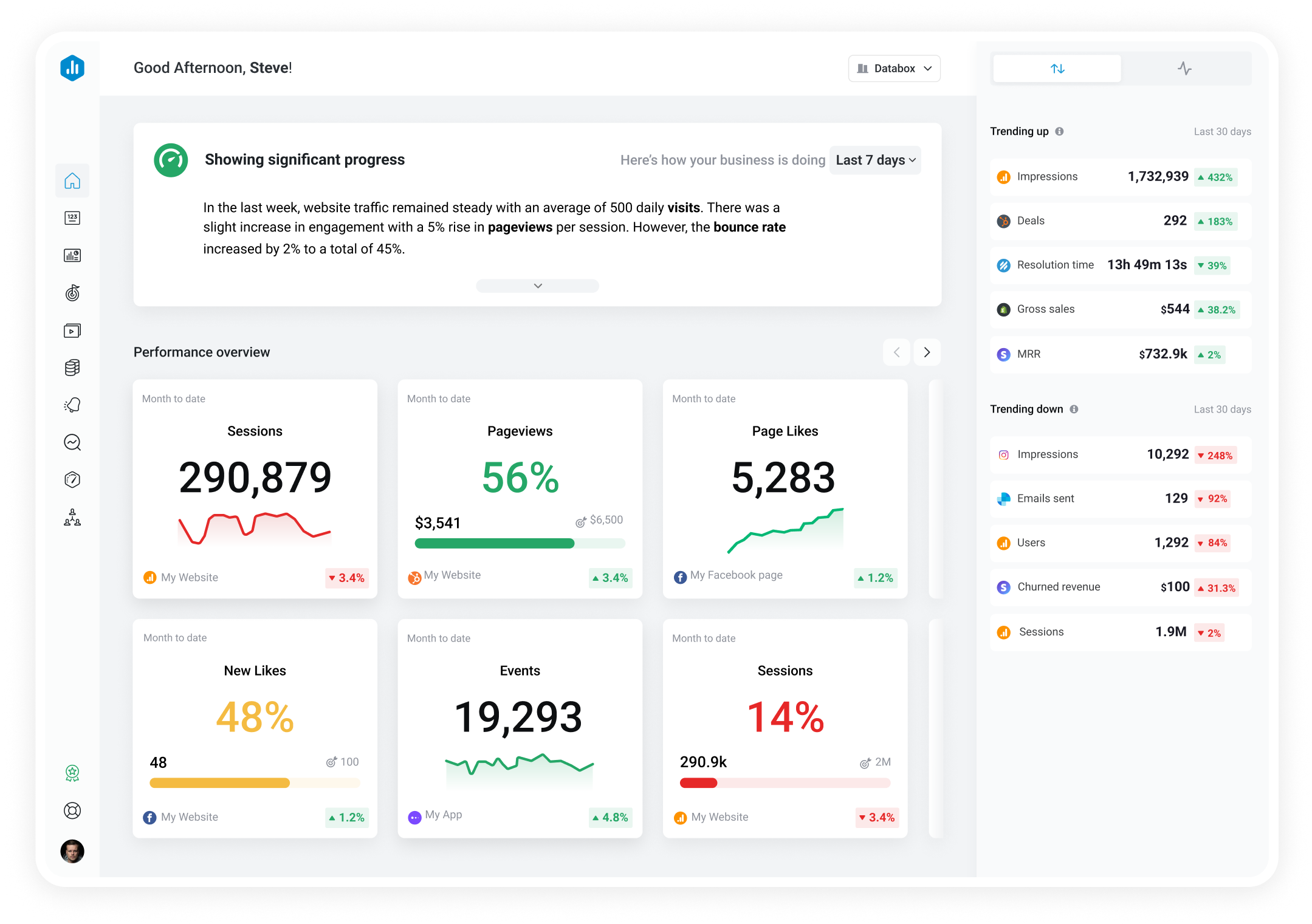Track all of your key business metrics from one screen
GET STARTED
 QuickBooks
Balance by Bank Accounts (Cash)
QuickBooks
Balance by Bank Accounts (Cash) The Balance by Bank Accounts metric is a financial measure that displays the total amount of money available in each bank account in your QuickBooks software.
With Databox you can track all your metrics from various data sources in one place.

Used to show comparisons between values.
Databox is a business analytics software that allows you to track and visualize your most important metrics from any data source in one centralized platform.
To track Balance by Bank Accounts (Cash) using Databox, follow these steps:
 Goals
Goals Scorecards
Scorecards Metric Digest
Metric Digest Metric Builder
Metric Builder Data Calculations
Data Calculations Performance Screen
Performance ScreenIn order for a Bank Account from Quickbooks to be visible in metrics in Databox, the Bank Account must be visible in the Balance Sheet report in Quickbooks under the Assets > Current Assets > Bank Accounts tree.
